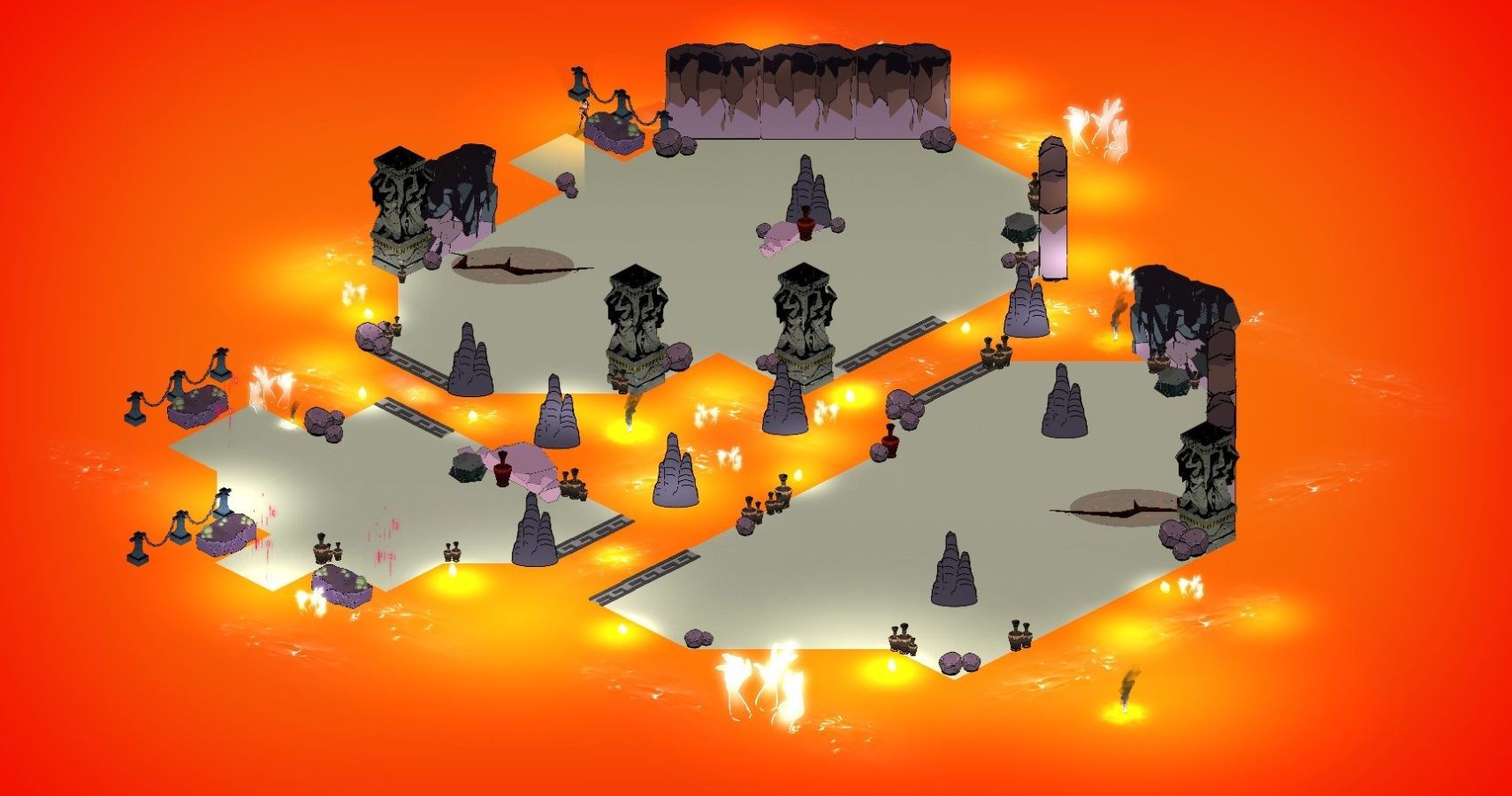Ed Gorinstein, Game Designer for the critically acclaimed Hades, posted a detailed look at the development process behind the title's most iconic levels. These include a look at Asphodel's archipelago design, how the Barge of Death was developed, and how the team captured that elusive feeling of exploration.
The 19-tweet thread was shown off by Gorinstein in honor of Blocktober – an event that runs the entirety of October as is a time for game designers to show others what goes on behind-the-scenes of their current project. In Gorinstein's case, that game is Hades. And what he had to show is incredibly interesting.
The Asphodel Issue
If you've played through Hades, you'll know that Asphodel has a distinct vibe among all other biomes. Beyond providing an open environment that is surrounded by lava instead of walls, Asphodel rooms are created using what Gorinstein calls, "the archipelago idea." Each room is broken up into smaller islands, with a river of lava running between them. Apparently, this seemingly basic design was the root of many other problems.
"The archipelago idea was enticing but took many iterations to solve the issues with player and enemy AI magma traversal. We tried many things from creating RTS-style shallow bridges to allowing enemies to walk across magma, but ultimately every enemy in Asphodel was designed to have a dedicated way of getting over magma." This typically surfaced as a dashing or teleporting mechanic, making the foes in Asphodel some of the most mobile in all of Hades, and gave them an easy way to move across the islands.
The Barge Of Death Illusion
If you're lucky enough – or unlucky enough, depending on your view – to come across the Barge of Death, you're in for a wild fight. And, unlike all other rooms which are stationary, the Barge of Death ferries you across the underworld. At least, that's what it looks like while you're playing.
In reality, the barge isn't going anywhere. Instead, the rest of the room is scrolling past you. It's hard to explain – and even Gorinstein has a hard time putting the complex mechanic into words – so he's provided a short clip of it in action. You can check it out in the tweet below:
Exploring A Confined World
The final topic Gorinstein discussed is exploration, a feature that is crucial to the success of roguelikes, but also something that can be difficult to implement when you're working in confined environment like Hades. The team tried to do a few basic things, such as hiding gold in walls or creating massive rooms with several different doors, but it was ultimately decided that these didn't fit with the game's art style. Here's what the team came up with instead:
Blocktober In Full-Swing
We've only covered a portion of Gorinstein's lengthy post, so if you're craving more Hades content be sure to give the full thread a look. He goes over the intricacies of the spawning system, how the team determined the number of exits to each room, the philosophy behind hazards and traps, and plenty more.
The month is just getting started, and we're excited to see what else Blocktober will bring us before November rolls around.

